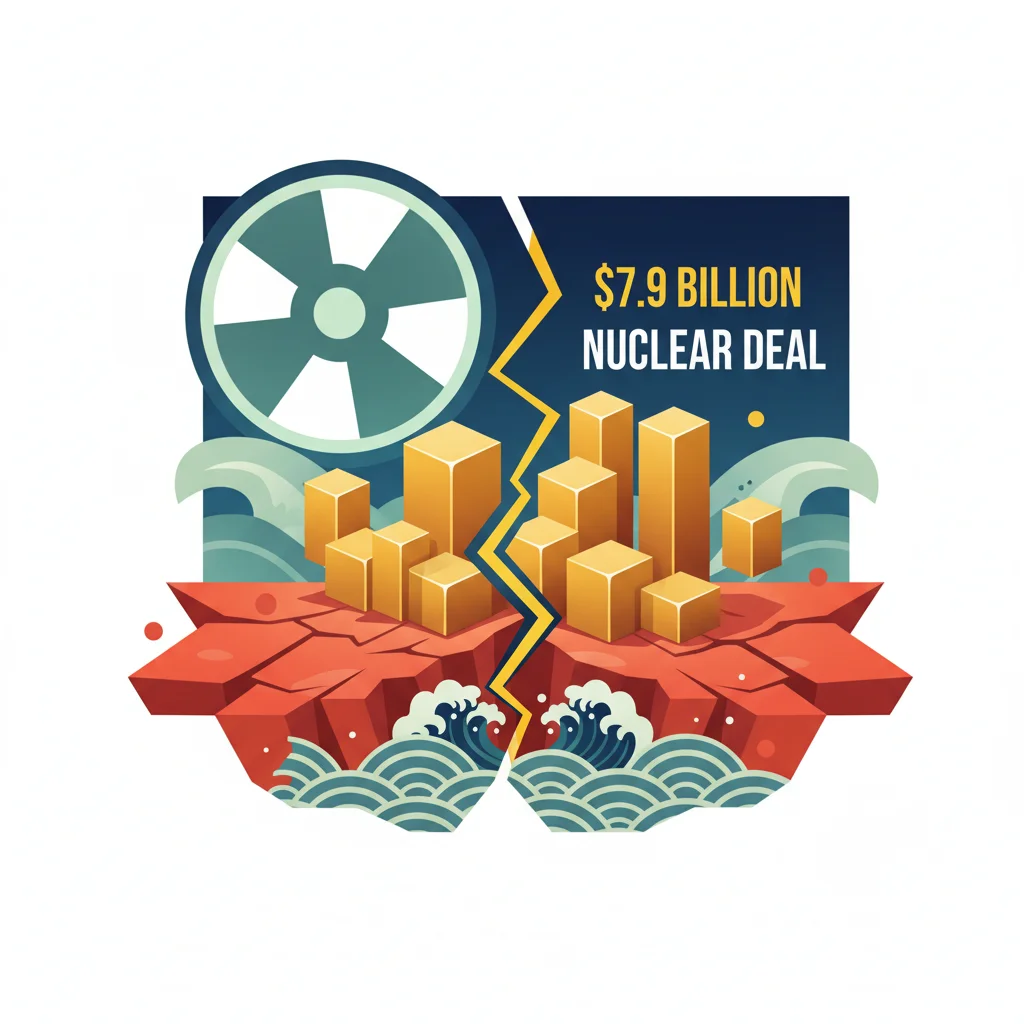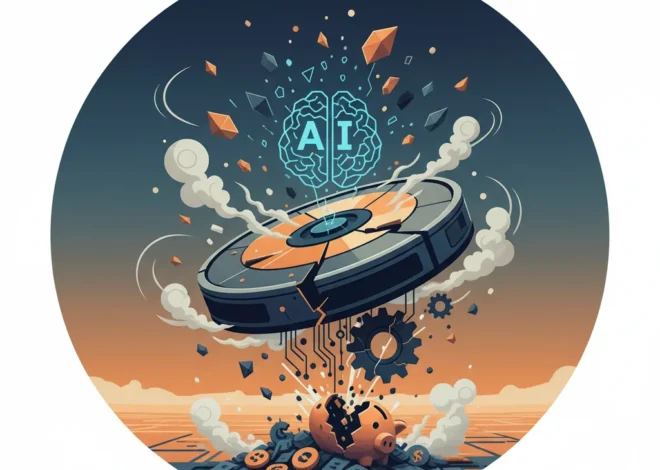
The Fault Line in Finance: Why a $7.9B Nuclear Deal Ignores Japan’s Seismic Warnings
In the world of high finance, multi-billion dollar deals are celebrated with fanfare. When a consortium led by Canadian uranium giant Cameco and private equity heavyweight Brookfield Renewable Partners announced their $7.9 billion acquisition of nuclear power giant Westinghouse, the stock market reacted with predictable optimism. The move was hailed as a savvy bet on a global nuclear renaissance, a strategic play for energy security in a volatile world, and a nod towards a carbon-free future. On paper, the economics looked sound, the strategy clear, and the future bright.
But what if the most critical risk factor isn’t on the balance sheet? What if it’s etched into the very bedrock of a key market?
A poignant letter to the Financial Times from Mitsuko Mori Matsuda of Mexico City provides a sobering counter-narrative. Drawing on Japan’s “long and painful history with earthquakes,” Matsuda questions the wisdom of pinning nuclear ambitions on a nation that sits precariously atop one of the world’s most active seismic zones. This single letter, a voice of historical memory against a chorus of financial projections, forces us to ask a crucial question: Is the modern financial system, with all its sophisticated models and fintech tools, capable of pricing in risks that are as old as the earth itself?
This acquisition is more than just a transaction; it’s a high-stakes case study examining the dangerous blind spots in our approach to investing, risk management, and the global economy.
The Nuclear Bet: Understanding the Westinghouse Deal
To appreciate the gravity of the warning, we must first understand the deal’s strategic importance. Westinghouse Electric Company is a titan in the nuclear industry. It doesn’t just build reactors; its technology is the foundation for nearly half of the world’s nuclear power plants. The acquisition by Cameco, a leading uranium producer, and Brookfield, a clean energy investor, is a masterclass in vertical integration and a powerful signal to the market.
The rationale is compelling:
- Energy Security: In the wake of geopolitical conflicts disrupting traditional energy supplies, nations are desperately seeking stable, domestically controlled power sources. Nuclear offers a potent solution.
- Climate Goals: As the world grapples with decarbonization, nuclear power provides a consistent, carbon-free baseload energy that renewables like solar and wind cannot yet guarantee.
- Economic Revival: For Japan, a renewed push for nuclear power is seen as a way to reduce its reliance on expensive imported fossil fuels, a critical factor impacting its national economy and trade balance.
This deal sent ripples through the stock market, bolstering valuations for companies across the nuclear supply chain. For investors and finance professionals, it looked like the dawn of a new era for an industry once beleaguered by public skepticism. But this optimistic financial narrative omits a crucial, non-negotiable variable: geology.
India's Trillion-Dollar Banking Bet: Why a Record Foreign Investment Signals a New Economic Era
A Warning Written in Tremors: Japan’s Seismic Reality
Mitsuko Mori Matsuda’s letter is not based on financial modeling but on lived history. Japan is located on the Pacific “Ring of Fire,” an area where several continental and oceanic plates grind against each other. This makes it one of the most seismically active countries on the planet, experiencing thousands of tremors each year. The country’s history is punctuated by catastrophic earthquakes, from the Great Kantō Earthquake of 1923, which devastated Tokyo, to the 2011 Tōhoku earthquake and tsunami.
The 2011 disaster is a name seared into the global consciousness: Fukushima. A magnitude 9.0 earthquake—one of the most powerful ever recorded—triggered a massive tsunami that overwhelmed the sea walls of the Fukushima Daiichi Nuclear Power Plant, leading to a triple meltdown. The event was a harrowing demonstration of what happens when advanced technology collides with the untamable power of nature. It exposed vulnerabilities not just in one plant’s design, but in the very concept of operating such facilities in a high-risk zone.
The financial fallout was immense, costing an estimated ¥22 trillion ($200 billion) and leading to the shutdown of all of Japan’s nuclear reactors. The long-term economic and social costs are still being calculated. This is the “painful history” Matsuda refers to—a history that seems to be discounted in the excitement over the Westinghouse deal.
The Blind Spot in the Spreadsheet: When Financial Models Fail
How can a multi-billion dollar investment, vetted by some of the sharpest minds in finance, seemingly overlook such a fundamental risk? The answer lies in the limitations of our financial tools and a systemic bias towards quantifiable, short-to-medium-term data.
Traditional investment analysis, driven by discounted cash flow (DCF) models and quarterly earnings reports, excels at projecting predictable revenue streams. It is far less adept at pricing in low-probability, high-impact “black swan” events like a catastrophic earthquake. These risks don’t fit neatly into a spreadsheet. They are often dismissed as statistical outliers or “acts of God” rather than foreseeable threats to be actively mitigated and priced into a deal.
This table illustrates the gap between standard financial due diligence and the kind of holistic risk assessment required for ventures like nuclear power in Japan.
| Standard Financial Due Diligence | Geospatial & Historical Risk Assessment |
|---|---|
| Focus on revenue projections, market share, and operational costs. | Focus on seismic mapping, historical disaster frequency, and geological surveys. |
| Analyzes historical stock market performance and sector trends. | Analyzes historical records of tsunamis, volcanic activity, and land stability. |
| Models interest rate fluctuations and currency risk. | Models the cascading financial impact of a major natural disaster on supply chains and the national economy. |
| Relies on company-provided ESG reports that may offer a generalized view of environmental risk. | Integrates expert analysis from seismologists, historians, and disaster planning specialists. |
| Time Horizon: Typically 5-10 years for investment returns. | Time Horizon: 50-100+ years, matching the operational lifespan of a nuclear facility. |
The rise of ESG (Environmental, Social, and Governance) investing was meant to address these shortcomings. However, the “E” in ESG often focuses more on carbon emissions and pollution than on deep geological and catastrophic event risk. A company can have a stellar carbon footprint and still be fatally exposed to a seismic event, a vulnerability that generic ESG scores may fail to capture.
Echoes of 1929: Is Today's Tech Boom a Modern-Day Tale of "Shiny Toy Hubris"?
The Global Ripple Effect: Why This Isn’t Just Japan’s Problem
The implications of mispricing this kind of risk extend far beyond the Japanese archipelago and the portfolios of Cameco and Brookfield. A future nuclear incident in Japan, a linchpin of the global economy, would trigger a catastrophic domino effect.
The intricate web of global trading and supply chains would be instantly disrupted. The banking sector would face unforeseen liabilities, and the global stock market would plummet amidst the uncertainty. The economic shockwave would be felt in every sector, from manufacturing to financial technology. This isn’t just an energy sector investment; it’s a bet on the stability of one of the world’s most critical economic regions.
This case study serves as a powerful metaphor for other systemic risks we are currently underpricing. Are we adequately valuing the risk of rising sea levels for coastal real estate investments in Miami? Are we pricing in the long-term impact of historic droughts on agricultural ventures in California? The same logic applies. The failure to respect and integrate deep environmental and historical data into our economic models is a systemic vulnerability across the board.
A New Paradigm for Investing: Seeing the Full Picture
The warning from Japan’s seismic history is not a call to abandon nuclear energy or to halt all investment in high-risk zones. It is a call for a more intelligent, humble, and holistic approach to finance and investing.
For business leaders, investors, and finance professionals, this presents a clear mandate to evolve:
- Expand the Due Diligence Team: An M&A team shouldn’t just consist of bankers and lawyers. For major infrastructure projects, it should include geologists, historians, and sociologists who can provide the critical context that numbers alone cannot.
- Demand Radical Transparency: Investors must push companies to go beyond generic ESG statements and provide detailed models of how they assess and mitigate long-tail, catastrophic risks specific to their areas of operation.
- Embrace Qualitative Data: We must re-learn how to value narrative and historical context as crucial data points. The “long and painful history” of a region is not anecdotal color; it is a forward-looking risk indicator.
The future of successful economics and trading will belong to those who can see the full picture—the ones who can read a balance sheet and a seismic map with equal fluency.
The Trillion-Dollar Handshake: Unpacking the Global Economic Stakes of the Trump-Xi Summit
Ultimately, the Westinghouse deal will proceed, and the financial world will watch closely. But we owe a debt of gratitude to voices like Mitsuko Mori Matsuda, who remind us that the earth keeps its own ledger. True long-term value creation is not about ignoring inconvenient truths but about respecting them. The most profound risks to our economy are not always found in market volatility or interest rate hikes, but in the silent, powerful forces simmering just beneath the surface.


